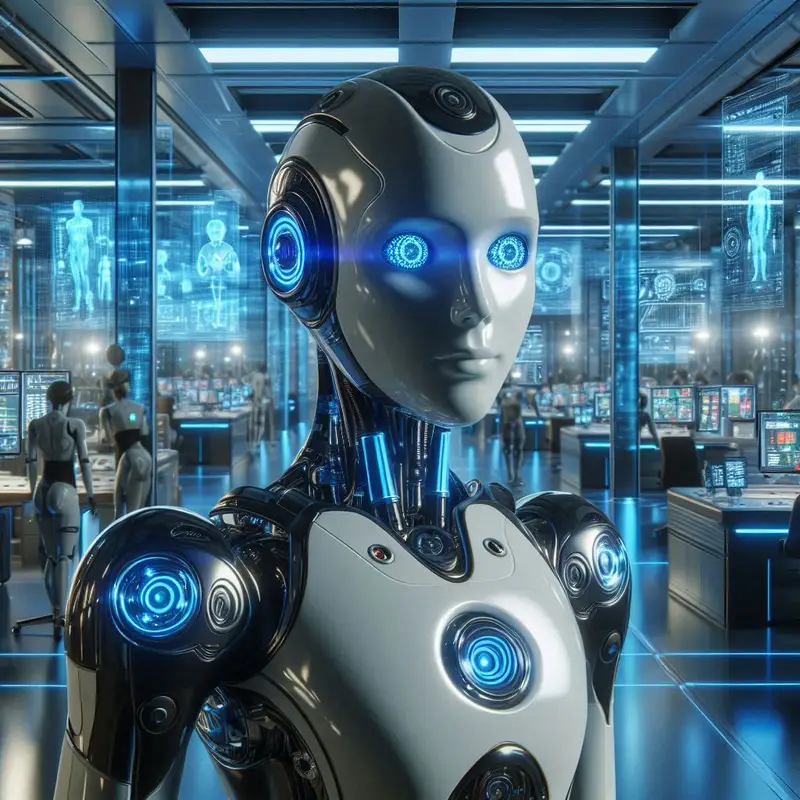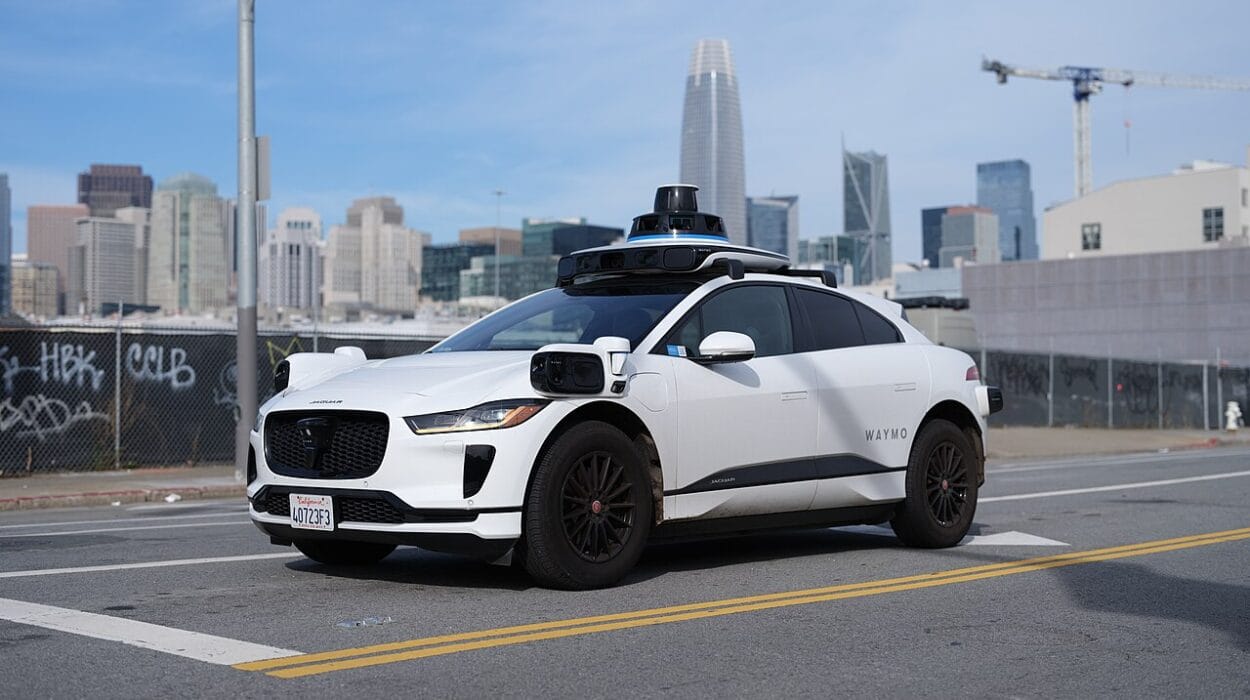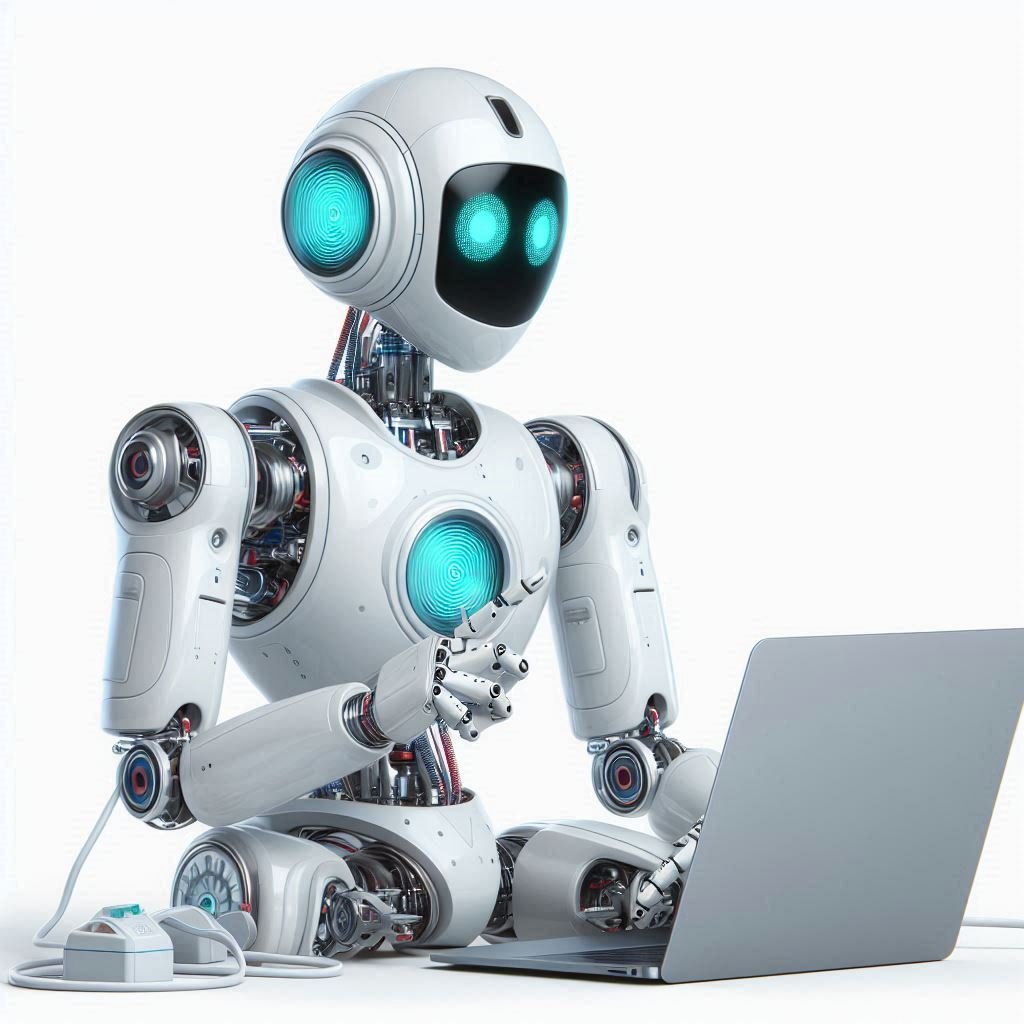The future has always been a land of mystery, a place where technological marvels promise to change the world in unimaginable ways. As we stand on the brink of new frontiers, we are witnessing a convergence of revolutionary technologies that will not only shape the way we live but transform the very fabric of our societies, economies, and environments. In the past few decades alone, humanity has made incredible strides in fields ranging from artificial intelligence to biotechnology, space exploration, and renewable energy. These breakthroughs are no longer just theoretical possibilities—they are tangible realities that will define the coming generations.
In this article, we will explore five emerging technologies that are poised to have a profound impact on our future. These are not just innovations; they represent a paradigm shift in how we perceive the world, interact with each other, and engage with the forces of nature. From the rise of artificial intelligence to the promise of space exploration and bioengineering, each of these technologies will contribute to a new world—one that is more interconnected, sustainable, and efficient. Let’s dive into the fascinating world of emerging technologies and discover what the future holds.
1. Artificial Intelligence: The Brain of the Future
Artificial intelligence (AI) is perhaps the most talked-about technology of the 21st century, and for good reason. In its simplest form, AI refers to machines designed to simulate human intelligence, learning from experience, recognizing patterns, and making decisions. But this description barely scratches the surface of what AI is truly capable of. From machine learning to deep learning, AI is already being integrated into industries across the globe, revolutionizing sectors like healthcare, finance, manufacturing, and entertainment.
The Rise of Machine Learning
At the heart of AI’s power is machine learning—a subset of AI that enables computers to learn from data without explicit programming. Machine learning algorithms are already transforming industries. In healthcare, for example, AI-driven diagnostic tools can analyze medical images, detect diseases, and even predict patient outcomes with remarkable accuracy. In finance, AI is used for fraud detection, risk management, and algorithmic trading. Meanwhile, in retail, machine learning helps companies understand consumer behavior, personalize recommendations, and optimize supply chains.
As machine learning becomes more sophisticated, the potential applications will grow exponentially. AI will not only automate mundane tasks but also tackle complex, creative challenges. Imagine a world where AI is assisting doctors in surgeries, writing novels, or even composing symphonies. The future of AI holds the promise of machines that augment human intelligence and creativity, opening doors to innovations that we can only begin to imagine.
The Promise and Perils of AI
While the benefits of AI are undeniable, there are also challenges that need to be addressed. As AI becomes more advanced, ethical questions about its use will come to the forefront. Issues like data privacy, algorithmic bias, and the displacement of workers will require careful consideration. Moreover, as AI systems become increasingly autonomous, there is the potential for unintended consequences—autonomous vehicles, for example, may make split-second decisions that raise questions about accountability.
Yet, despite these challenges, AI’s potential to solve some of humanity’s most pressing problems—such as climate change, disease, and inequality—remains immense. The key will be to ensure that AI is developed and implemented responsibly, with safeguards in place to mitigate its risks while harnessing its power to improve lives.
2. Quantum Computing: Unlocking the Power of the Universe
Imagine a computer that can solve problems in seconds that would take today’s most powerful supercomputers millennia to solve. This isn’t science fiction—it’s the promise of quantum computing. Quantum computing is a field of computing based on the principles of quantum mechanics, the branch of physics that describes the behavior of particles at the smallest scales. Unlike classical computers, which process information in binary bits (0s and 1s), quantum computers use quantum bits, or qubits, which can exist in multiple states simultaneously.
The Quantum Leap
This ability to exist in multiple states at once—known as superposition—gives quantum computers the potential to perform calculations that are currently impossible for classical machines. Furthermore, quantum computers can leverage a phenomenon called entanglement, where the state of one qubit is directly tied to the state of another, even across vast distances. This allows quantum computers to process vast amounts of data simultaneously, exponentially increasing their computing power.
One of the most exciting applications of quantum computing is in the field of cryptography. Today’s encryption methods rely on the difficulty of factoring large numbers, a problem that classical computers struggle to solve. However, quantum computers could theoretically break these encryption methods in seconds, posing a significant challenge to cybersecurity. On the flip side, quantum computing also holds the key to creating unbreakable encryption, which would revolutionize online security.
Practical Applications and Challenges
In addition to cryptography, quantum computing has the potential to revolutionize fields like drug discovery, materials science, and climate modeling. Quantum computers could simulate molecular structures and chemical reactions with unprecedented accuracy, enabling the rapid development of new pharmaceuticals or the creation of more efficient solar panels. Additionally, they could help us better understand complex systems, such as climate change, by modeling them with incredible precision.
However, there are significant challenges to overcome before quantum computing becomes mainstream. For one, qubits are highly sensitive to their environment, making it difficult to maintain their quantum state for long periods. Researchers are working on developing more stable qubits and improving error correction techniques. Furthermore, quantum computers require extremely low temperatures to function, making them costly and impractical for widespread use at this stage. Despite these challenges, quantum computing remains one of the most promising emerging technologies, with the potential to unlock new frontiers in science and technology.
3. Biotechnology and Genetic Engineering: Designing the Future of Life
Biotechnology and genetic engineering are already changing the world, but the next wave of innovations in these fields will fundamentally alter what it means to be human. From gene editing to synthetic biology, biotechnology is advancing at an unprecedented rate, promising solutions to some of the most pressing challenges facing humanity, from disease prevention to food security.
CRISPR: The Gene Editing Revolution
One of the most exciting developments in biotechnology is the advent of CRISPR-Cas9, a gene-editing tool that allows scientists to make precise changes to the DNA of living organisms. CRISPR has already been used to modify the genomes of plants, animals, and even humans, with the goal of curing genetic diseases, improving crop yields, and creating more resilient organisms.
For example, CRISPR has shown promise in treating genetic disorders like sickle cell anemia and cystic fibrosis. By editing the genes responsible for these conditions, researchers hope to provide patients with a permanent cure. In agriculture, CRISPR could be used to create crops that are resistant to pests, drought, and disease, potentially solving food insecurity problems in a changing climate.
Ethical Considerations and Future Possibilities
While CRISPR and other gene-editing technologies offer immense potential, they also raise ethical questions. The ability to edit the human genome—particularly in embryos—has sparked debates about the potential for designer babies, eugenics, and unintended consequences. Similarly, the manipulation of animal and plant DNA could have far-reaching ecological impacts that are difficult to predict.
Nevertheless, the potential of biotechnology to improve human health and address environmental challenges is undeniable. In the future, we may see advancements like personalized medicine, where treatments are tailored to an individual’s genetic makeup, or bioengineering, where entirely new organisms are created to meet human needs. Biotechnology has the potential to radically transform industries ranging from healthcare to agriculture, making it one of the most powerful technologies of the future.
4. Renewable Energy and Energy Storage: Powering a Sustainable Future
As the world faces the growing threat of climate change, the need for clean, renewable energy has never been more urgent. Renewable energy technologies like solar, wind, and hydropower are already playing a significant role in reducing our reliance on fossil fuels, but the next wave of innovations in this field will push us closer to a sustainable future.
The Rise of Solar and Wind Energy
Solar and wind power have seen tremendous growth in recent years, thanks to advances in efficiency and falling costs. Solar panels are now cheaper than ever, and wind turbines are becoming more powerful and cost-effective. These technologies are rapidly becoming the primary sources of electricity in many parts of the world, with countries like Denmark and Germany leading the charge.
But there are still challenges to overcome. Solar and wind energy are intermittent—they depend on sunlight and wind, which are not always reliable. This is where energy storage comes into play. The ability to store energy generated by renewable sources is crucial for ensuring a steady supply of power, even when the sun isn’t shining or the wind isn’t blowing.
Breakthroughs in Energy Storage
Advancements in battery technology are paving the way for more efficient and affordable energy storage solutions. Lithium-ion batteries, which currently power everything from smartphones to electric vehicles, are being improved to store more energy and last longer. Additionally, solid-state batteries—which are safer, more energy-dense, and longer-lasting than traditional batteries—are being developed as a potential game-changer for both energy storage and electric vehicles.
Other innovations in energy storage include pumped hydro storage, where excess energy is used to pump water uphill, and compressed air energy storage, where energy is stored by compressing air in underground caverns. These technologies could provide large-scale storage solutions, enabling renewable energy to be used even when generation is low.
The Path to a Carbon-Free Future
The combined power of renewable energy and energy storage will be crucial for achieving a carbon-free future. As these technologies continue to improve, we can expect to see a world where clean, affordable energy is available to all, reducing our dependence on fossil fuels and mitigating the effects of climate change.
5. Space Exploration and Colonization: Expanding Beyond Earth
In recent years, space exploration has entered a new era, one defined by private companies, ambitious missions to Mars, and the promise of human colonization of other planets. Space exploration may seem like the domain of science fiction, but it is rapidly becoming a reality that could change the course of human history.
The Race to Mars
Perhaps the most exciting prospect in space exploration is the possibility of human colonization of Mars. Companies like SpaceX are working tirelessly to develop reusable rockets and spacecraft capable of transporting humans to the Red Planet. Elon Musk’s vision of making life multi-planetary could become a reality in the coming decades, as missions to Mars become more frequent and technologically feasible.
The challenges of colonizing Mars are immense, from the need for sustainable habitats to the potential hazards of radiation exposure and limited resources. However, with advancements in space travel and life support systems, the dream of establishing a permanent human presence on Mars is within reach. Once humans settle on Mars, the possibilities for exploration, resource extraction, and scientific discovery will be boundless.
The Role of Space in the Future
Space exploration is not just about exploring other planets—it also holds the key to solving problems here on Earth. Satellites provide critical data for weather forecasting, climate monitoring, and communications. Space mining, where valuable minerals are extracted from asteroids, could provide a new source of resources for Earth. And the technology developed for space missions often leads to innovations that benefit everyday life, from GPS systems to medical devices.
As humanity continues to push the boundaries of space exploration, we are laying the groundwork for a future where space is not just a place of exploration but a new frontier for human expansion and prosperity.
The future is coming, and it is being shaped by these incredible technologies. Whether it’s artificial intelligence enhancing our abilities, quantum computers unlocking new scientific mysteries, biotechnology creating personalized solutions, renewable energy powering our world, or space exploration expanding our horizons, the possibilities are boundless. These emerging technologies are not just transforming industries—they are redefining the very nature of what it means to be human. With the right vision, innovation, and responsibility, we are poised to create a future that is not only technologically advanced but also sustainable, equitable, and full of potential.






